Healthy lunch and snack ideas for children
A healthy, balanced diet is important for children to help them grow and give them energy. But it can be challenging to keep foods varied and healthy, especially when kids are growing up. As a mother of three boys under age 11, I’d like to share some healthy lunch and snack ideas. I’ve also got some tips on ways to keep things easy when feeding the family.
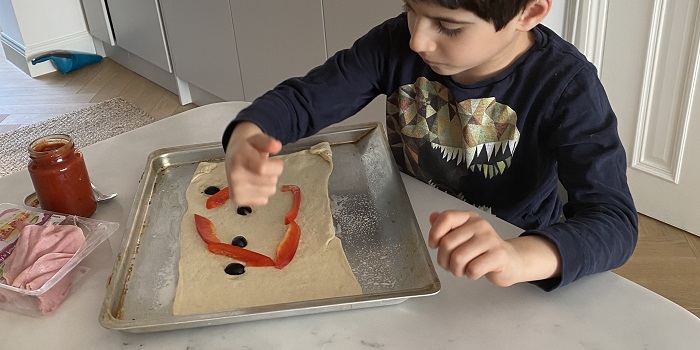
Making it work for your family
What works for one family may not work for another. The key is finding a routine to your day, and slotting meals and snacks around it. For my family, I’ve found it useful to cook together one or two menus that my sons choose.
I tend to walk every few days after school with them and get different fruits for snacking through the day. This makes it more appealing and exciting. We then have a substantial dinner just after they come in from school.
At the weekend, I try to be more creative with food as we have much more time. You can make it fun for your children by getting them involved.
For example, you could take them shopping to buy ingredients and also let them help with cooking. This can help to shape positive attitudes towards food and eating.
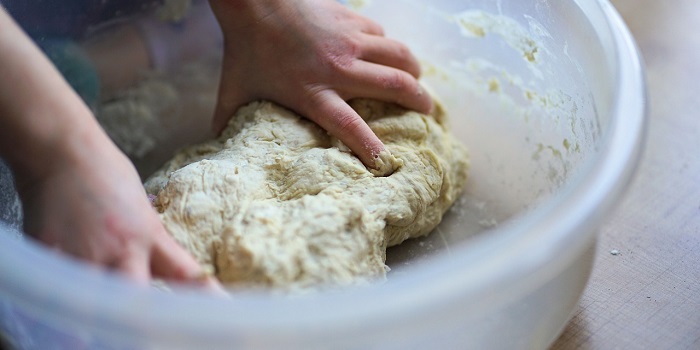
Healthy lunches
During busy times, making sandwiches for lunch can be a quick, nutritious, and delicious meal solution. For example, sandwich fillings such as grated cheese, eggs, peanut butter, tuna, salmon, or lean meat provide protein. You can also vary the filling and type of bread to mix it up, so things don’t get boring. Here are some ideas.
- Try different breads, such as ciabatta, wraps, seeded bread, bloomers, or sourdough.
- Spreads such as light mayonnaise, mustard, and pesto are great additions to a sandwich to pack in more flavour.
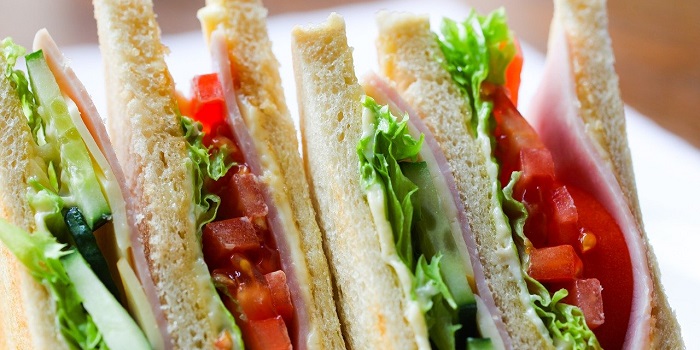
Below are some healthy and filling lunch ideas for your children (and you).
- Sardines on toast.
- Baked beans on jacket potatoes.
- Toast with peanut butter, cheese spread or hummus.
- Raw vegetables cut into sticks (such as carrots or cucumber).
- Toasted muffin or bagel with salmon or cream cheese. Add capers and a squeeze of lemon for more flavour.
- Scones, crumpets, or pancakes.
Healthy snacks for kids
Try to keep snacking to twice a day. Snacks such as chocolate, crisps, and biscuits can be high in salt and sugar so it’s best to keep these to an occasional treat. Also, try not to let your children fill up on snacks between mealtimes. Here are some healthy snack ideas.
- Plain yoghurt or fromage frais topped with their favourite fruit.
- Sliced or chopped fruits (apples, pears, bananas, and grapes).
- Sticks of cheese or a cup of milk.
- Rice cakes, breadsticks, or oatcakes.
- Walnuts, almonds, or peanuts with some raisins (if your child is not allergic).
Dried fruits should be kept to mealtimes only, as they have a high sugar concentration that can contribute to the development of tooth decay. Sugary drinks can also cause tooth damage, so opt to give your child water or milk.
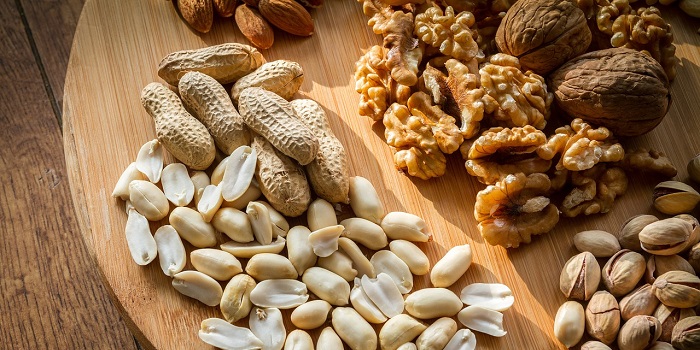
Top tips for healthy eating at home
- Offer your children a wide variety of foods to make sure that they get all the nutrients and energy they need. Give them a range of foods from the four main food groups: carbohydrates, fruits and vegetables, protein, and dairy.
- Try to plan your meals for a few days ahead and order bigger deliveries, or do fewer shops.
- Give your family a mixture of white, brown, and wholegrain bread varieties so they don’t get bored of the same bread. This will provide them with carbohydrates, various vitamins, and fibre.
- Give your children the opportunity to pick a meal once a week. If they’re old enough, they may be able to cook some of it, helping with chopping, adding ingredients, and serving it. We like to celebrate the end of the week by making pizzas together on a Friday evening.
- To get a variety of fruits and vegetables, I have a seasonal box delivered directly from a local farm every week. My children help me to unpack the box, wash it, and present the fruits nicely in a bowl. A rainbow of fruits and vegetables will provide your children with different vitamins (especially vitamin C) and are also a source of fibre.
- I’ve also added some raw nuts, chia seeds, and golden linseeds to our dinner table. These can be added to salads and yoghurt. The boys end up snacking on them as they’re just in front of them.
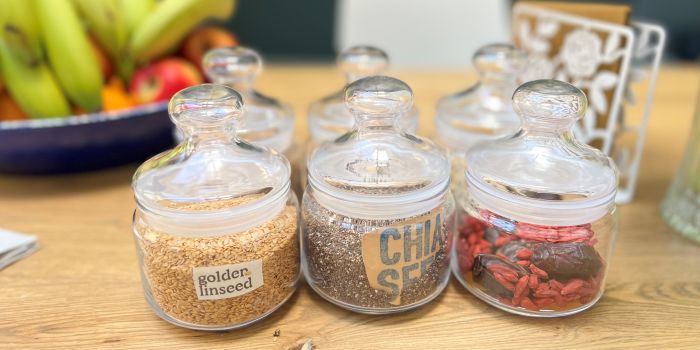
Recipe: Simple blueberry muffins
These muffins are easy to make and a healthy snack for hungry kids.
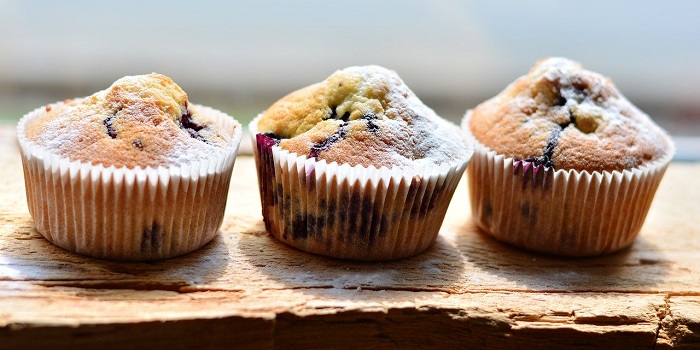
Ingredients
- 10 stoned prunes
- 175g wholemeal flour
- 2 teaspoons baking powder
- 2g sugar
- One egg
- 150 semi skimmed milk
- 100g blueberries
Method
- Make the prune purée by blending the prunes with a little water until they have the same consistency as double cream.
- Mix together the flour, baking powder, and sugar.
- Beat the egg and milk into the prunes purée.
- Add the egg mixture to the flour and beat thoroughly.
- Mix in the blueberries, while being careful not to break the fruit too much.
- Divide into muffin cases and cook in the oven for 25 minutes at 200°C or gas mark 6.
Enjoy!
Here at Bupa we understand how important your family is. So with our family health insurance you can rest assured knowing that eligible treatment and support is available to you and your loved ones when you need it.
-
Sources Sources
- Healthy eating for children: Food Fact Sheet. British Dietetic Association (BDA). bda.uk.com, published October 2021
- School-aged children and adolescents. Oxford Handbook of Nutrition and Dietetics (3 ed, online). Oxford Academic. academic.oup.com, published April 2020. doi: 10.1093/med/9780198800132.003.0014
- Macronutrients and energy balance. Oxford Handbook of Nutrition and Dietetics (3 ed, online). Oxford Academic. academic.oup.com, published April 2020. doi: 10.1093/med/9780198800132.003.0005
- Micronutrients. Oxford Handbook of Nutrition and Dietetics (3 ed, online). Oxford Academic. academic.oup.com, published April 2020. doi:10.1093/med/9780198800132.003.0006
About our health information
At Bupa we produce a wealth of free health information for you and your family. This is because we believe that trustworthy information is essential in helping you make better decisions about your health and wellbeing.
Our information has been awarded the PIF TICK for trustworthy health information. It also follows the principles of the The Information Standard.

More diet and nutrition articles
Did you find our advice helpful?
We’d love to hear what you think. Our short survey takes just a few minutes to complete and helps us to keep improving our healthy lifestyle articles.
Legal disclaimer
This information was published by Bupa's Health Content Team and is based on reputable sources of medical evidence. It has been reviewed by appropriate medical or clinical professionals and deemed accurate on the date of review. Photos are only for illustrative purposes and do not reflect every presentation of a condition.
Any information about a treatment or procedure is generic, and does not necessarily describe that treatment or procedure as delivered by Bupa or its associated providers.
The information contained on this page and in any third party websites referred to on this page is not intended nor implied to be a substitute for professional medical advice nor is it intended to be for medical diagnosis or treatment. Third party websites are not owned or controlled by Bupa and any individual may be able to access and post messages on them. Bupa is not responsible for the content or availability of these third party websites. We do not accept advertising on this page.







